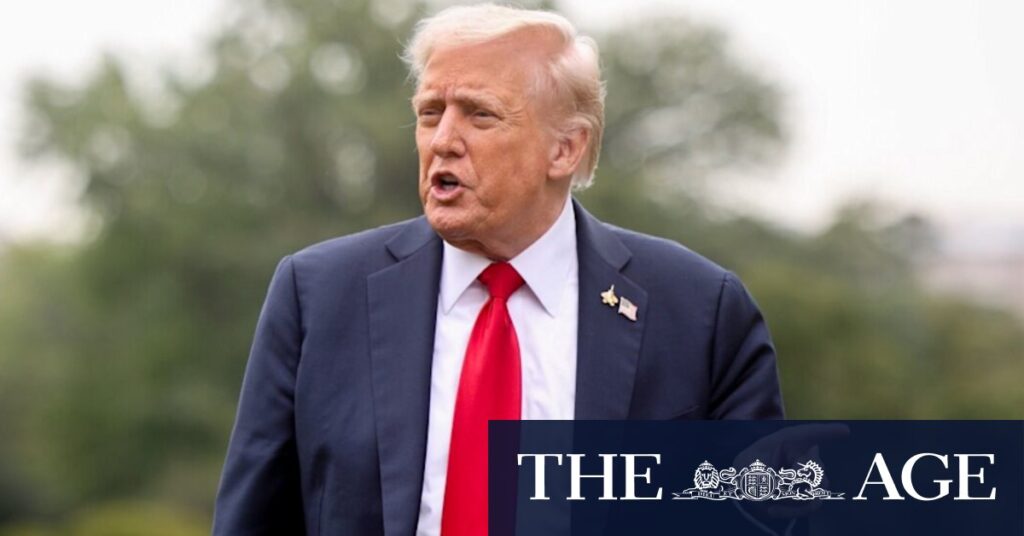
Washington: The US government has officially shut down after President Donald Trump and Congress failed to reach an agreement on a spending bill by Wednesday’s deadline. This impasse has resulted in approximately 750,000 federal workers facing furloughs, with the potential for some to be permanently dismissed by the Trump administration. Many government offices will remain closed, possibly indefinitely, as Trump has vowed to enact irreversible measures in retaliation.
A last-minute Senate vote to extend funding failed with a 55 to 45 vote, leading to the cessation of all but “essential” government activities. This shutdown is expected to disrupt services ranging from air travel to the release of monthly unemployment figures. “We don’t want it to shut down,” Trump stated at the White House just before the midnight deadline expired, yet with no compromise in sight, the duration of this shutdown remains uncertain.
Political Standoff and Blame Game
The president’s recent meetings with both Democratic and Republican congressional leaders failed to yield a deal. Following the Senate vote, Republican Senate leader John Thune blamed the Democrats’ “far-left base and far-left senators” for instigating a confrontation with the president. “And apparently, the American people just have to suffer the consequences,” he remarked.
This marks the third federal funding lapse under Trump’s administration, the first since his return to the White House this year. The current shutdown highlights the deepening divide over budget priorities and a political landscape that increasingly favors hardline stances over traditional compromise.
Recurring Budget Battles
Budget standoffs have become a regular occurrence in the US as political dysfunction has grown. This time, Democrats have demanded that any spending bill include additional healthcare subsidies, while Republicans argue that these issues should be addressed separately.
Adding to the tension, Trump has threatened to cancel Democrat-supported programs and lay off more federal workers if the government remains shut down. “We’ll be laying off a lot of people,” he warned, suggesting that those affected would predominantly be Democrats. This could exacerbate the brain drain within the government, with more than 150,000 workers set to leave federal jobs this week after accepting redundancy packages—the largest exodus in 80 years.
“We’ll be laying off a lot of people. They’re going to be Democrats.” — President Donald Trump
Economic and Social Implications
The last government shutdown, which lasted 35 days in 2018–19, was triggered by a dispute over immigration and cost the US economy approximately $3 billion, or 0.02 percent of GDP, according to the Congressional Budget Office. If the current shutdown persists for three weeks, Bloomberg Economics predicts the unemployment rate could rise to 4.6–4.7 percent from August’s 4.3 percent, as furloughed workers are classified as temporarily unemployed.
At the heart of the current dispute is $1.7 trillion in funding for agency operations, representing about a quarter of the government’s total $7 trillion budget. Democrats insist on making Affordable Care Act subsidies permanent, as they are set to expire at the end of the year. Without this resolution, healthcare costs for 24 million Americans could surge, disproportionately affecting Republican-controlled states like Florida and Texas that have not implemented other aspects of the law to provide coverage for low-income individuals.
“It does nothing, absolutely nothing to solve the biggest healthcare crisis in America.” — Senate Democratic Leader Chuck Schumer
Republicans, while open to compromise, accuse Democrats of holding the budget hostage to their demands. Historically, Congress has shut down the government 15 times since 1981, with most shutdowns lasting only a day or two. The most recent, during Trump’s first term, was also the longest.
Looking Ahead
As the shutdown continues, the impact on federal employees and the broader economy remains a significant concern. Agencies have issued detailed plans for the shutdown, closing offices involved in scientific research, customer service, and other “nonessential” activities, and sending thousands of workers home without pay. Essential personnel, such as soldiers and border guards, will remain on duty but will not receive pay until Congress resolves the budget impasse.
The ongoing shutdown underscores the urgent need for bipartisan cooperation to address the nation’s fiscal challenges. As political leaders navigate this complex situation, the American public and economy hang in the balance, awaiting a resolution that remains elusive.







